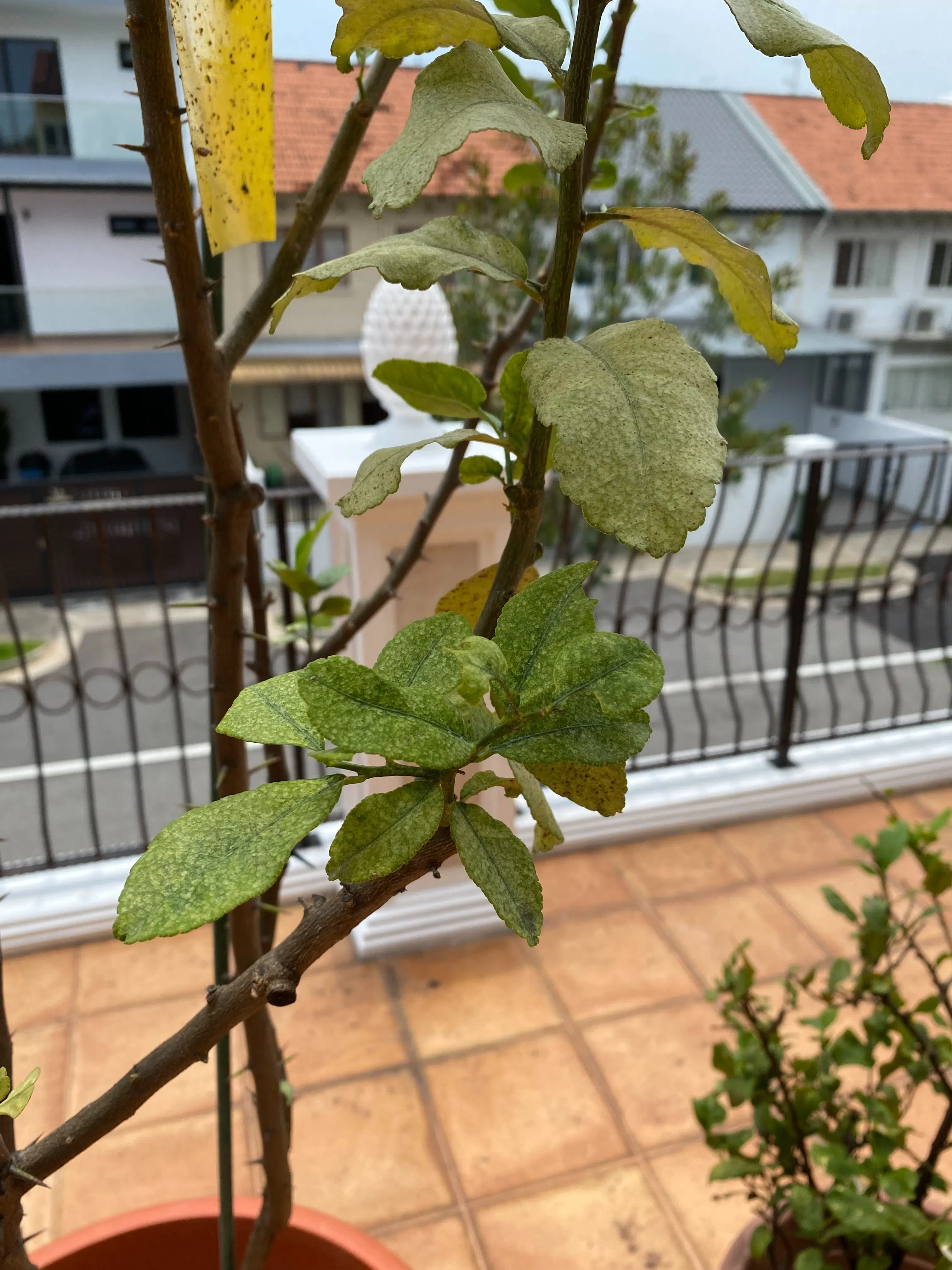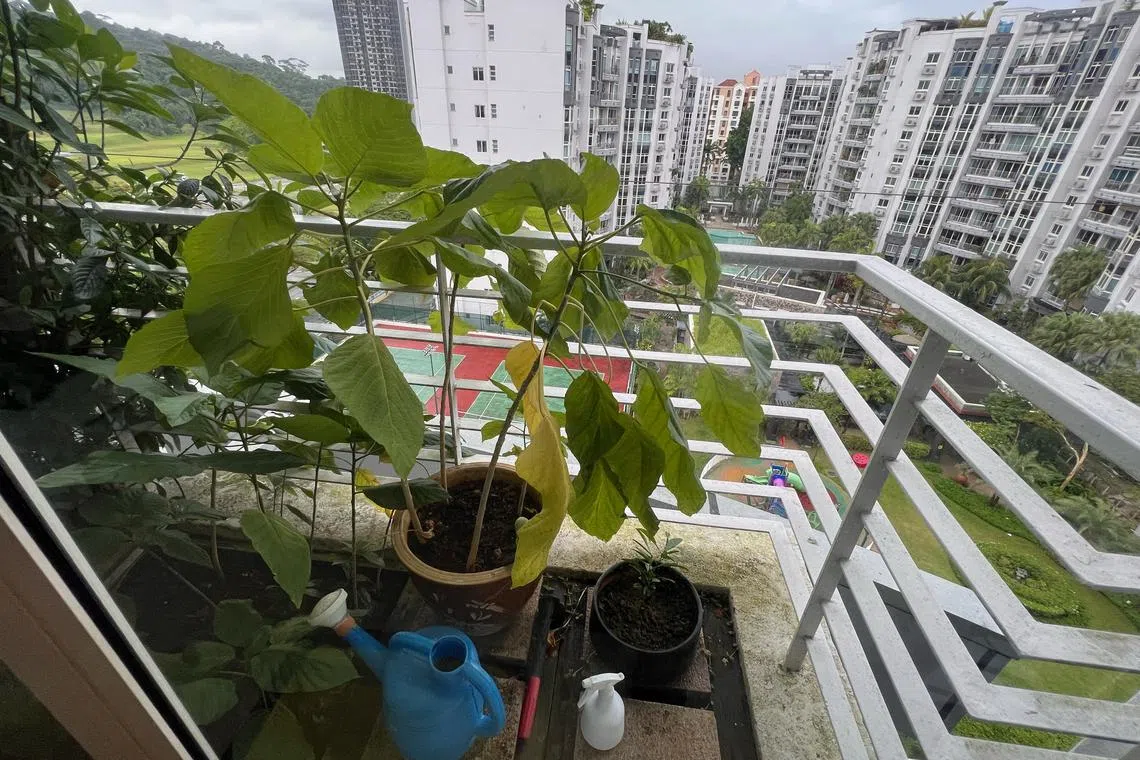Root Awakening: Sessile joyweed thrives in the sun
Sign up now: Get ST's newsletters delivered to your inbox

The sessile joyweed’s aerial parts can be boiled to make home remedies.
PHOTO: JAMES GOH
Wilson Wong
Follow topic:
Sessile joyweed is a common medicinal plant
What are these purple plants? They sprouted in the pots of my other plants and seem to be growing wild quickly.
James Goh
The plant is the sessile joyweed (botanical name: Alternanthera sessilis). This herb thrives in sunny conditions and moist soil, and is easily propagated via stem cuttings.
It is a medicinal plant that is commonly grown here. Research shows that the plant has anti-diabetic, anti-inflammatory, antioxidant and cholesterol-lowering properties in animal subjects.
It can be removed if you have no use for it or find it a nuisance.
Check rubber plant’s roots; rotate regularly

The plant with drooping leaves may be dehydrated or suffering from poor root health, while the asymmetrical plant needs to be rotated more regularly.
PHOTOS: JOANNE ONG BEE GUAT
One of my rubber plants has drooping leaves and the other has leaves on only one side. What is wrong?
Joanne Ong Bee Guat
The drooping leaves may be a sign that your rubber plant is not getting enough water. Water it regularly, especially if the plant is grown in a sunny spot where water evaporates faster and the plant’s transpiration rate is high.
The plant may also be unable to take up water. Have its roots been disturbed lately, such as by repotting?
Carefully remove the plant from its pot and examine its roots. Healthy roots should be white and firm.
Soil-borne pests like root mealy bugs, as well as disease brought about by poor drainage, can leave roots unable to take up water.
In such instances, you have to kill the pests or cut the diseased or dead roots, and repot the plant in a well-draining soil mix. Let the plant recover in a cool but bright area for a few weeks before moving it to a spot for optimal growth.
As for your asymmetrical plant, it may be that light is coming from only one direction – for instance, if your plant is placed directly next to a wall – and your plant has not been rotated.
Plant is the rattleweed

The rattleweed is a legume that gets its name from the sound of its seeds being shaken in its pods.
PHOTOS: ALICE TEO
What is this plant? I found a flower pod on the pavement in a park in October 2022, and placed its seeds in an empty pot. The plant has since grown more than 80cm tall.
It is on my balcony, where it gets morning sun and at least four hours of direct sunlight, and is watered daily. It produces yellow flowers (Photo A). At night, its leaves fold up (Photo B). It recently started shedding leaves in the morning (Photo C), but there seems to be new growth on the stems that are shedding (Photo D).
Alice Teo
The plant you have is the rattleweed (botanical name: Crotalaria retusa), a common legume that is often planted in landscapes here. Its name is derived from the sound that is made when the seeds are shaken in their dried pods. Its leaves fold up in the dark.
This plant needs a lot of water, so make sure it has a large enough pot. A lack of water will cause its leaves to turn yellow and fall.
It is an annual plant, meaning it will grow, flower and produce seeds. It will gradually decline with time, so you will need to grow new plants from the seeds produced by the mother plant.
Seed-grown lemon trees may not breed true

The development of seed-grown plants can be difficult to predict.
PHOTO: SARAH SOONG
I have eight potted lemon plants which I grew from seeds about 3½ years ago. They are about 1.4m tall and I prune them regularly, but there are no flowers or fruit. How can I help my plants bear fruit?
About a month ago, there were lots of small, dark, stick-like insects on the plants. Neem oil did not help, so I used sticky paper and a pesticide containing pyrethroids. This seemed to work, but there are now many whitish-yellow spots on the plant. They are not furry and do not seem to be mould. What are they?
Sarah Soong
The growth of seed-grown fruit trees can be difficult to predict, and they may need to grow very large before they start to flower and fruit, if they do so at all.
If you want your plants to bear fruit, you may need to purchase grafted plants that can be grown for this purpose.
The stick-like insects cannot be reliably identified without a picture. As for the spots, they may be the Citrus Hindu Mite, a common pest on citrus plants. They are so small that they are not visible to the eye. The spots on the existing leaves are permanent, but new leaves will replace them in time.
The Citrus Hindu Mite’s population can be controlled by spraying summer oil, which suffocates mites. Complete coverage and regular applications are needed to provide adequate pest control.
Plant is not sunflower

When growing plants from seeds, buy them from reliable vendors.
PHOTO: PEH YEW GUAN
My sunflower plant is growing fast and is about 90cm tall, but has not flowered. What can I do to make it bloom?
Peh Yew Guan
The leaves of this plant do not appear to be those of the sunflower. It is best to buy only from a reliable vendor, so you get good-quality seeds that are true to what they are supposed to be.
If you want to grow sunflowers, dwarf varieties are best suited to small pots. Large varieties will not thrive in such containers.
Also, sunflowers need lots of sunlight and can be challenging to grow in high-rise apartments that do not get much of it.
Answers by Dr Wilson Wong, an NParks-certified practising horticulturist and parks manager. He is the founder of Green Culture Singapore and an adjunct assistant professor (Food Science & Technology) at the National University of Singapore.
Have a gardening query? E-mail it with clear, high-resolution pictures of at least 1MB, if any, and your full name to . We reserve the right to edit and reject questions.

